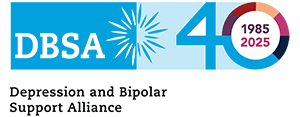Agitation is a feeling of uneasiness typically accompanied by excessive talking or purposeless motions such as pacing or wringing of the hands. This symptom is a special concern for many people who live with a mood disorder, as these individuals are more likely to experience an episode of agitation. Unlike depression and bipolar disorder, agitation isn’t a diagnosis on its own. Rather, it’s typically a symptom of a mood disorder or another medical condition.
Agitation can be triggered in individuals when the treatment for their mood disorder is not working as well as it should. Stress or traumatic events can also trigger agitation. While it is a distressing experience, many people are able to manage and prevent the escalation of an agitation episode by educating themselves about the signs of agitation and developing a plan for when these signs appear.
The Spectrum of Agitation
In addition to feelings of unease, excessive talking, and unintentional motions such as wringing of the hands or pacing, mild to moderate signs of agitation may include:
- picking or pulling at hair, skin, or clothing;
- unconscious movement;
- outbursts;
- shuffling feet; and
- clenching fists.
As an episode of agitation escalates, the person may begin to show
- excitement,
- hostility,
- poor impulse control,
- tension,
- uncooperativeness, and
- violent/disruptive behavior.
Agitation is experienced on a spectrum, so not everyone experiencing agitation will express all of these characteristics. It is especially important to note that agitation does not always lead to violence. Often, agitation goes hand in hand with anxiety or aggressive behavior, but doctors usually use agitation to describe only unintentional and purposeless behaviors that result from feelings of inner restlessness.
Treatments
Treatment of agitation often involves treating the underlying condition such as depression, bipolar disorder, or another medical issue. Early intervention is often the most effective, which is why it is so important to understand and look for the signs of an agitation episode before it escalates.
Verbal de-escalation is a technique in which health care professionals talk a person down from an agitated state. The goal in verbal de-escalation is to help the person regain control so that he or she can better communicate their needs with health care providers. Fast-acting medications may also be used temporarily for more severe episodes of agitation.
Many people use a multi-faceted, personalized treatment plan which often includes medication and counseling or talk therapy, peer support, and personal wellness strategies. Having a plan in place will help a person maintain a sense of empowerment and control that can stop agitation before it starts.
Further Information
DBSA created the Understanding Agitation education section to shed light on this commonly misunderstood symptom and promote compassionate, effective treatments. Below are links to help you learn more about what agitation looks and feels like, how family and friends can help, and helpful treatment and prevention strategies.
Understanding Agitation Video Series
De-escalation
Agitation is an acute behavioral emergency requiring immediate intervention. In this simulation, Scott Zeller, M.D. demonstrates verbal de-escalation. De-escalation is highly effective and has been identified as the preferred intervention in calming a person experiencing agitation. This technique is also key to avoiding seclusion and restraint, which can be traumatizing to both patients and staff. The goal in verbal de-escalation is to help the person regain control so that he or she can better communicate needs with health care providers.
Personal Stories
Agitation is a state of unease accompanied by excessive talking and/or unintentional and purposeless motions, like wringing the hands or pacing. It manifests in a broad spectrum and people with mood disorders may be more disposed to experiencing agitation. Through personal stories, this video illustrates the way agitation impacts life, provides tips and information on supporting and treating an individual experiencing agitation, and identifies wellness strategies that have helped peers live successfully.
Understanding Agitation Webinar
Health Care Providers
If you are a health care provider, we developed the Understanding Agitation Kit which contains special tools for you in recognizing and treating patients who are experiencing agitation.


